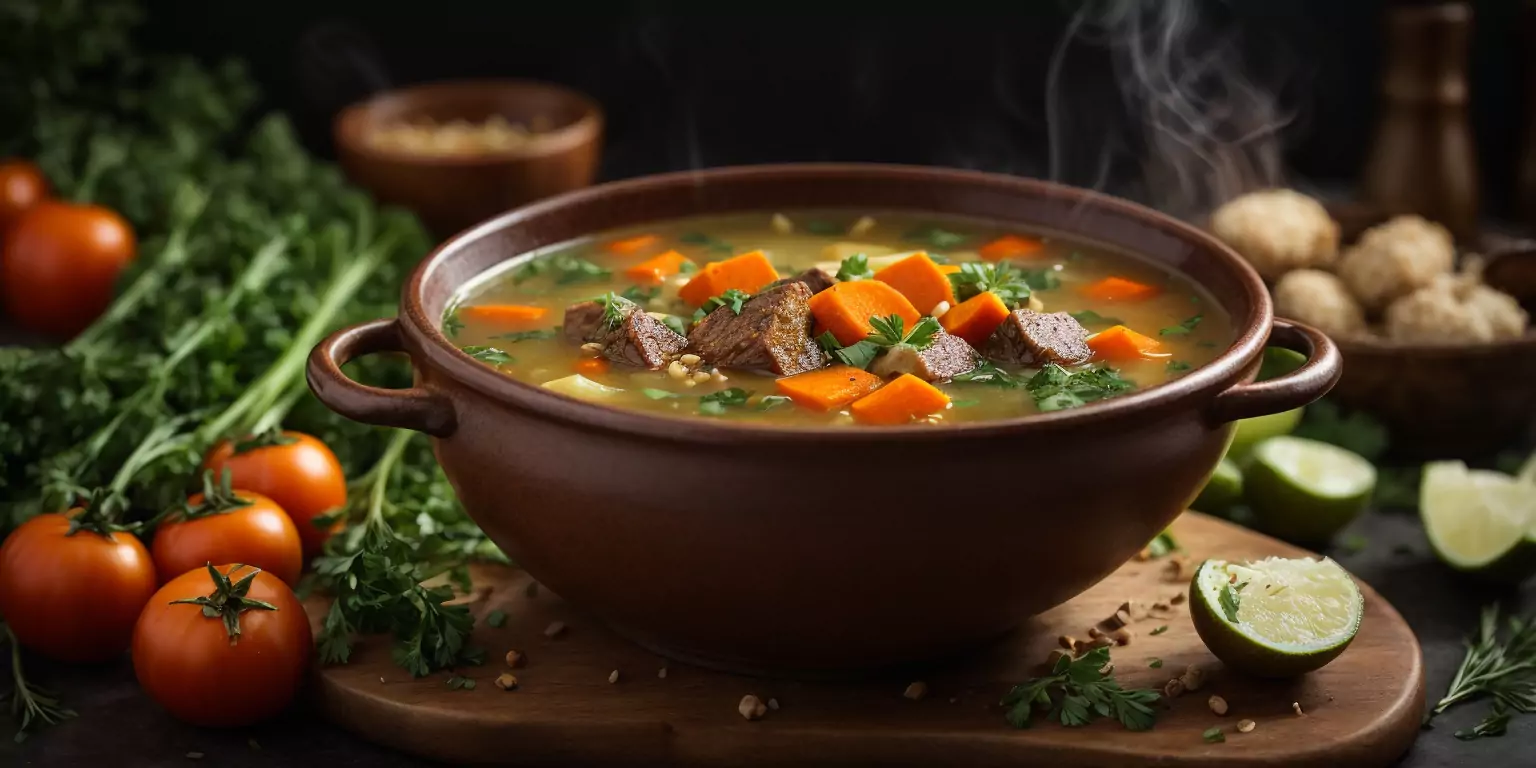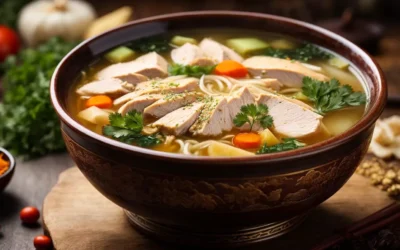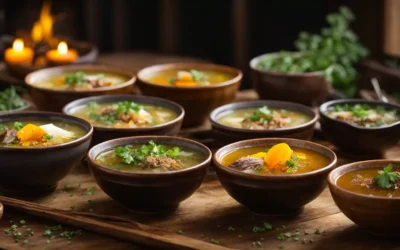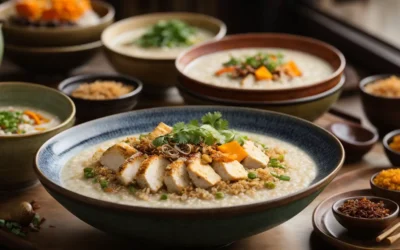Curious about how traditional Chinese medicine (TCM) can transform your lunchtime routine? Explore the blend of ancient knowledge and modern health in TCM lunch recipes. These recipes aim to nourish not just the body, but also the mind and spirit by balancing flavors, temperatures, and textures. By grasping the link between TCM principles and balanced nutrition at midday, you can embrace a holistic approach to wellness.
Explore a realm where meals mean more than just fuel; they’re a journey to health and happiness. Delve into our array of lunch recipes influenced by TCM that honor the essence of equilibrium and unity in each mouthful.
- TCM Principles for Optimal Digestion Through Diet
- Nourishing Congee and Soup Recipes for Lunchtime Healing
- Flavorful Stew and Entree Recipes with TCM Benefits
- Wholesome Side Dishes and Appetizers for Balanced Meals
- Energizing Smoothies and Beverages with TCM Ingredients
- Homemade Powder and Traditional Raw Herb Formulas
- Proprietary and Classical TCM Recipes for Holistic Health
- Creating Your Own TCM-inspired Lunch Recipe Book
- Conclusion: Embracing TCM for a Nourishing Lunch Routine
- Frequently Asked Questions
TCM Principles for Optimal Digestion Through Diet
Role of TCM in Promoting Optimal Digestion
Traditional Chinese Medicine (TCM) plays a crucial role in promoting optimal digestion through diet. Digestion is considered the foundation of overall health in TCM, and it’s believed that good digestive health leads to better energy levels, improved mood, and enhanced vitality. By following these principles, individuals can make dietary choices that support their digestive organs and promote efficient digestion.
TCM emphasizes the importance of consuming warm, cooked foods to support the digestive system. According to this philosophy, raw foods are more challenging for the body to digest and may lead to imbalances within the digestive organs. For instance, incorporating steamed vegetables into lunch recipes aligns with TCM principles by making nutrients more easily accessible for absorption while being gentle on the digestive system.
In addition to emphasizing warm and cooked foods, TCM encourages mindful eating practices such as chewing food thoroughly. This aids in breaking down food particles effectively before they reach the stomach and small intestine for further digestion. By following these guidelines when preparing lunch meals based on TCM principles, individuals can positively impact their overall digestive wellness.
Guiding Dietary Choices for Better Digestion
When considering lunch options from a TCM perspective, it’s essential to prioritize ingredients that are beneficial for digestion. Incorporating ingredients like ginger or peppermint into recipes can aid in soothing the stomach and alleviating discomfort associated with poor digestion. For example, adding a small amount of grated ginger to stir-fried dishes not only enhances flavor but also supports healthy digestion according to TCM guidelines.
Furthermore, choosing whole grains over refined grains is another way to promote optimal digestion. Whole grains contain fiber which helps regulate bowel movements and supports a healthy gut environment—an essential aspect of good digestive health according to Traditional Chinese Medicine beliefs.
Nourishing Congee and Soup Recipes for Lunchtime Healing
Introducing Congee in TCM
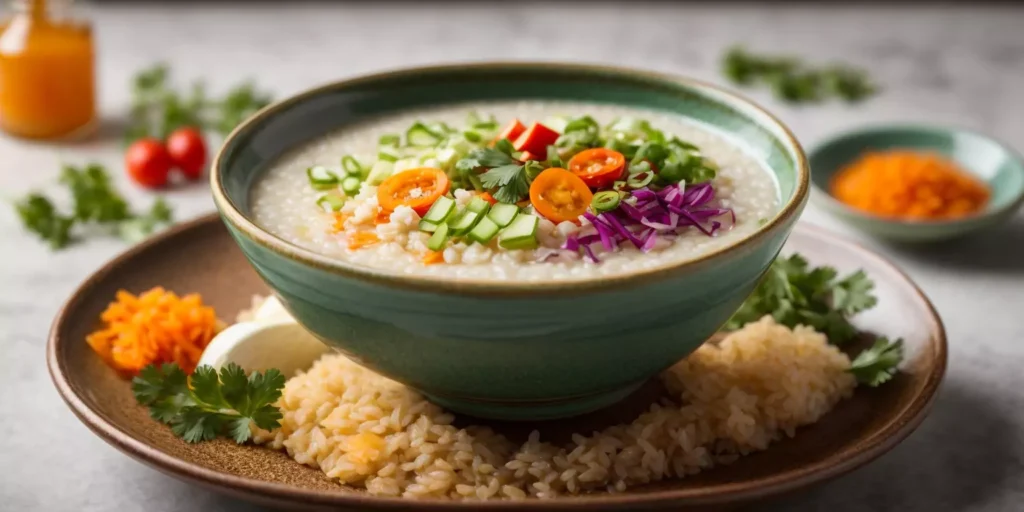
Congee, a staple in Traditional Chinese Medicine (TCM), is renowned for its healing properties. This rice-based porridge is gentle on the stomach, making it ideal for promoting digestion and overall gut health. Congee is often recommended to support the spleen and stomach, vital organs responsible for transforming food into energy. The gentle nature of congee aligns with TCM’s emphasis on warm, cooked foods that are easily digestible.
In addition to being easy on the digestive system, congee recipes can be customized with various ingredients to address specific health concerns. For example, adding ginger to congee enhances its warming properties and helps dispel coldness from the body according to TCM principles. Furthermore, incorporating yang-enhancing ingredients such as chicken or black pepper can bolster vitality and promote energy circulation within the body.
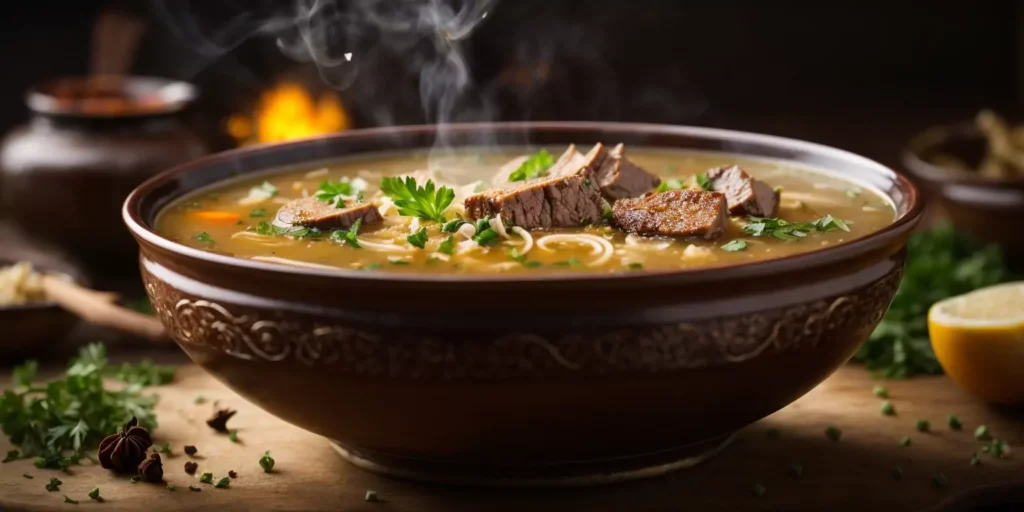
Healing Soup Recipes Aligned with TCM Principles
Soups play a significant role in nourishing the body according to TCM principles. Similar to congee, soups are valued for their ability to deliver essential nutrients while supporting digestive function. When crafting soup recipes aligned with TCM principles, it’s crucial to prioritize ingredients that offer both flavor and healing benefits.
For instance:
- Bone broth-based soups are highly regarded in TCM due to their ability to strengthen qi (vital energy) and nourish blood.
- Incorporating root vegetables like carrots or sweet potatoes supports spleen function while providing ample vitamins and minerals.
- Utilizing herbs such as astragalus or goji berries can enhance a soup’s therapeutic properties by fortifying immune function.
Flavorful Stew and Entree Recipes with TCM Benefits
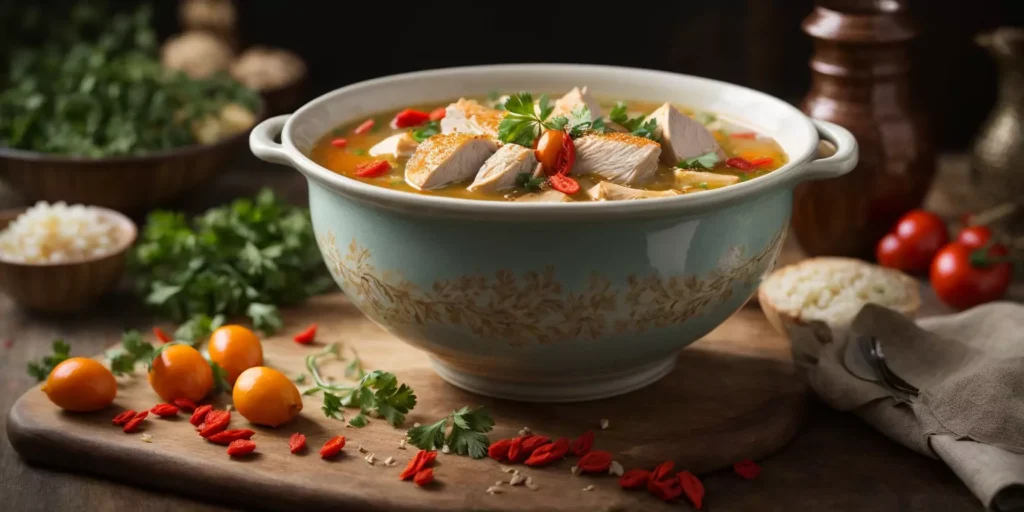
TCM-Inspired Ingredients
In traditional Chinese medicine, ingredients like ginger, goji berries, and shiitake mushrooms are often used for their health-boosting properties. These ingredients can be incorporated into flavorful stew recipes to not only enhance the taste but also provide nutritional benefits. For example, a hearty chicken stew with ginger and goji berries not only offers a rich flavor but also supports immune function due to the inclusion of these TCM-inspired elements. The use of warming spices such as cinnamon or star anise in stews aligns with TCM principles by promoting circulation and digestion, making them ideal choices for a nourishing lunch.
Using herbs like astragalus root in entree recipes is another way to infuse dishes with TCM health benefits. For instance, a stir-fry featuring astragalus root alongside vegetables and lean protein sources provides both delicious flavors and potential health advantages associated with this herb. By adding these components to your daily meals, you can tap into the holistic approach of TCM for overall wellness and still have a delicious lunch.
Herbs and Spices in TCM-Infused Dishes
The incorporation of herbs and spices plays a crucial role in creating flavorful entrees that align with TCM principles. For example, turmeric-infused tofu curry not only adds vibrant color to the dish but also brings anti-inflammatory properties due to turmeric’s presence—a key aspect of many TCM practices focusing on reducing inflammation within the body.
Similarly, using Sichuan peppercorns or garlic chives in vegetable-based stir-fries introduces unique flavors while potentially providing digestive support.
Wholesome Side Dishes and Appetizers for Balanced Meals
Complementing TCM Lunch Recipes
In Traditional Chinese Medicine (TCM), nutrition is a vital aspect of maintaining balance within the body. Incorporating wholesome side dishes is essential. These can include steamed vegetables like broccoli or bok choy, which are rich in nutrients and support the principles of yin and yang.
Including whole grains such as brown rice or quinoa can provide a good source of sustained energy throughout the day. These grains also add substance to the meal while aligning with TCM’s emphasis on nourishing the body with natural, unprocessed foods.
It’s important to note that in TCM, achieving balance involves incorporating an array of flavors and textures into meals. For instance, alongside a hearty stew from the previous section, adding stir-fried mixed vegetables can introduce a refreshing crunch and vibrant colors to complement the heartiness of the main dish.
Enhancing Balance with Appetizers
When looking at enhancing balance in TCM-inspired meals through appetizers, consider options like lightly seasoned edamame beans or a small portion of miso soup. Edamame provides plant-based protein while offering a satisfying umami flavor that complements other elements of your meal.
Similarly, miso soup contains fermented soybean paste known as miso which supports gut health due to its probiotic nature. This aligns with one of the key principles in TCM nutrition – promoting digestive wellness for overall bodily harmony.
Furthermore, integrating diverse flavors and textures into appetizers not only enhances enjoyment but also contributes to fulfilling different nutritional needs within each meal. For example, pairing light cucumber salad with sesame dressing offers a crisp texture along with nutty undertones from sesame seeds – creating an interesting contrast when served alongside warm entrees or stews featured earlier.
Energizing Smoothies and Beverages with TCM Ingredients
Nourishing Smoothies
Energy-boosting smoothies are an excellent addition to a TCM-inspired lunch. By incorporating specific herbs and fruits, these beverages can provide a natural energy lift. For instance, adding ginseng, known for its revitalizing properties in TCM, into a fruit-based smoothie can enhance its energizing effects.
In traditional Chinese medicine (TCM), certain ingredients like ginger and goji berries are believed to invigorate the body’s vital energy or “qi.” By blending these ingredients with fruits such as bananas or oranges, you can create nourishing smoothies that align with TCM principles. These beverages not only offer hydration but also contribute to sustaining energy levels throughout the day.
Herbal Infusions
Herbal infusions play a significant role in supporting lunchtime energy according to TCM principles. Ingredients like licorice root, commonly used in TCM for its ability to replenish qi, can be steeped in hot water to create an invigorating herbal tea. Combining this with slices of lemon or mint leaves further enhances the refreshing and uplifting qualities of the infusion.
Incorporating herbal infusions into your lunch routine provides an opportunity to benefit from the therapeutic properties of various herbs while promoting overall well-being aligned with TCM philosophy. These beverages not only serve as alternatives to caffeinated drinks but also contribute positively towards maintaining vitality during midday hours.
Homemade Powder and Traditional Raw Herb Formulas
Homemade Powders in TCM Lunch Recipes
Homemade powders play a significant role in traditional Chinese medicine (TCM) practices, offering a convenient way to incorporate the benefits of raw herbs into daily meals. These powders are often derived from dried medicinal herbs that have been finely ground into a powder form. They can be added to various lunch recipes, such as soups, stews, or even salad dressings, enhancing both the flavor and nutritional value of the dishes.
By incorporating homemade powders into lunch recipes, individuals can enjoy the wellness benefits associated with TCM ingredients without having to consume them directly in their raw form. For instance, adding a sprinkle of homemade ginger powder to a vegetable stir-fry not only imparts a delightful hint of warmth but also harnesses ginger’s digestive and anti-inflammatory properties.
Moreover, creating homemade powders at home allows for customization based on personal health needs and taste preferences. This flexibility enables individuals to tailor their lunch recipes according to specific wellness goals while savoring the rich flavors synonymous with TCM ingredients.
Raw Herb Formulas for Wellness Benefits
In traditional Chinese medicine (TCM), raw herb formulas are meticulously crafted combinations of various medicinal herbs aimed at addressing specific health concerns or promoting overall well-being. These formulas have been used for centuries as natural remedies for an array of ailments ranging from digestive issues to stress management.
Practitioners often consider factors such as individual constitution and current health conditions before prescribing personalized herbal blends. The versatility of these formulas extends beyond decoctions and teas; they can also be infused into broths or incorporated into hearty grain-based dishes like congee or rice bowls.
For example, a nourishing chicken soup infused with an adaptogenic blend of astragalus root and goji berries showcases how raw herb formulas can elevate everyday lunch options while delivering immune-boosting properties essential for overall vitality. By infusing these time-honored formulations into lunch recipes, individuals can seamlessly integrate TCM principles into their culinary repertoire while reaping the holistic benefits offered by these potent herbs.
Proprietary and Classical TCM Recipes for Holistic Health
Proprietary and Classical
Proprietary TCM lunch recipes are specifically crafted to promote holistic health benefits, combining the principles of Traditional Chinese Medicine with nutritious ingredients. These recipes often focus on balancing the body’s energy, or qi, and nourishing specific organs according to TCM theory. For instance, a TCM lunch recipe might include foods that support spleen health to improve digestion and reduce fatigue.
In contrast, classical TCM lunch recipes have a rich historical significance deeply rooted in traditional Chinese culture. These recipes have been passed down through generations and are based on ancient wisdom about food’s impact on overall well-being. They often emphasize using seasonal ingredients in harmony with nature’s rhythms.
Both types of TCM lunch recipes offer valuable insights into cultural traditions and practices that have stood the test of time. By incorporating these recipes into modern lifestyles, individuals can connect with centuries-old wisdom while nurturing their bodies with wholesome meals.
Historical Significance
The historical significance of classical TCM lunch recipes lies in their roots within ancient Chinese civilization. These culinary traditions reflect a deep understanding of how food can be used as medicine to maintain balance within the body. For example, dishes like congee (rice porridge) have been consumed for centuries in China due to its gentle nature on the digestive system, making it an ideal choice for those seeking healing or recovery from illness.
On the other hand, proprietary TCM lunch recipes, although more contemporary, draw inspiration from classical principles while integrating modern dietary knowledge. This fusion allows for innovation while staying true to the core philosophies of Traditional Chinese Medicine.
Creating Your Own TCM-inspired Lunch Recipe Book
Personalized Recipe Collection
Creating your own TCM-inspired lunch recipes can be an exciting and fulfilling endeavor. Start by gathering a variety of recipes that align with the principles of Traditional Chinese Medicine (TCM). Look for dishes that incorporate ingredients known for their health-promoting properties, such as ginger, turmeric, and leafy greens. Consider including recipes that focus on achieving a balance of flavors and textures to support overall well-being.
When curating your recipe collection, think about the specific needs of you and your family. Whether it’s boosting energy levels or supporting digestion, having a range of recipes tailored to individual requirements ensures that everyone can benefit from the TCM approach to nutrition. Consider including recipes suitable for different seasons as per TCM beliefs regarding eating according to nature’s rhythms.
Diverse TCM Elements
Incorporating diverse elements into your recipe book is essential for providing a comprehensive overview of TCM-inspired cooking. Include tips on how different cooking techniques affect the energetic properties of food according to TCM theory. For instance, steaming is believed to retain more nutrients compared to other methods like frying or boiling.
Another important aspect is incorporating various tastes recognized in TCM – sweet, sour, bitter, salty, and pungent – in each meal. This not only enhances flavor but also contributes to maintaining a harmonious balance within the body according to traditional Chinese dietary therapy principles.
Consider integrating pro tips on using herbs commonly found in traditional Chinese cuisine such as goji berries or astragalus root which are believed to have medicinal properties when used appropriately in cooking.
Unleash Your Creativity
Encourage readers not only to explore existing recipes but also to experiment with creating their own unique TCM-inspired lunch dishes based on personal preferences and health goals. Experimenting with ingredient combinations while keeping in mind the principles of Traditional Chinese Medicine allows individuals greater control over their nutritional intake while promoting holistic well-being.
By exploring new ingredients like lotus seeds or wood ear mushrooms alongside familiar ones like chicken or tofu; readers can develop innovative yet balanced meals rooted in both tradition and personalized wellness goals.
Conclusion: Embracing TCM for a Nourishing Lunch Routine
You’ve now explored the rich tapestry of Traditional Chinese Medicine (TCM) lunch recipes, each brimming with health-boosting ingredients and centuries-old wisdom. By incorporating TCM principles into your lunch routine, you’re not just nourishing your body but also fostering holistic well-being. The healing power of congees, soups, entrees, and beverages infused with TCM ingredients is now at your fingertips, empowering you to embark on a journey toward optimal health and vitality.
As you embrace these TCM-inspired lunch recipes, remember that small changes can lead to significant improvements in your overall wellness. Take the time to savor each meal mindfully, appreciating the nourishment it provides for your body and soul. Share this newfound knowledge with friends and family, spreading the joy of holistic living. Let the wisdom of TCM guide you toward a balanced and vibrant life.
Frequently Asked Questions
Can TCM lunch recipes help improve digestion and overall wellness?
Absolutely! Traditional Chinese Medicine principles emphasize the importance of balanced nutrition for optimal digestion and holistic well-being. By incorporating TCM-inspired lunch recipes, you can nourish your body with wholesome ingredients that support digestive health and overall wellness.
How can I incorporate TCM principles into my daily lunch routine?
You can easily integrate TCM principles into your daily lunch routine by preparing nourishing dishes such as congee, soups, stews, and entrees using TCM-recommended ingredients. Focus on creating balanced meals that align with the fundamental concepts of Traditional Chinese Medicine to promote harmony within the body.
Are there specific TCM ingredients I should include in my lunch recipes?
Yes, there are various TCM ingredients known for their beneficial properties. Examples include ginger, goji berries, shiitake mushrooms, ginseng, astragalus root, and more. These ingredients are often used in traditional Chinese herbal medicine for their therapeutic effects on health and vitality.
What are some simple ways to create a TCM-inspired lunch recipe book?
Start by compiling your favorite TCM-based lunch recipes along with information about the healing properties of key ingredients. Consider organizing the book by categories such as soups, entrees, beverages, etc., making it easy to reference when planning your meals.
How can embracing a TCM-inspired approach enhance my overall well-being?
By embracing a Traditional Chinese Medicine approach to meal planning and preparation for lunchtime nourishment, you’ll not only support physical health but also cultivate mindfulness around food choices. This holistic perspective promotes balance within the body while fostering a deeper connection between mind, body, and spirit.

